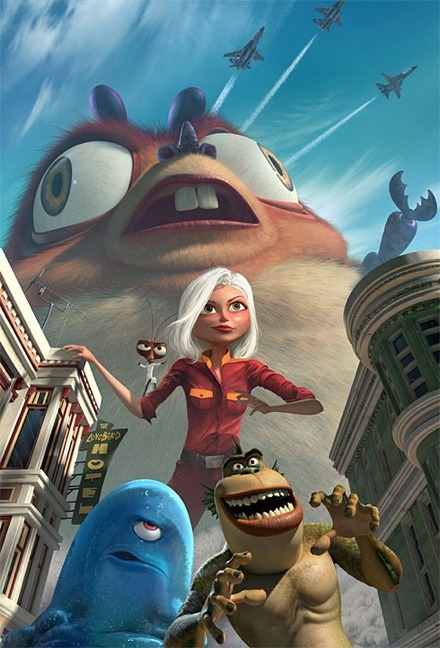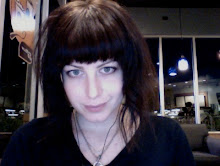
Disney, the father of all animation, and now owner of nearly all animation production companies, has long been the producer of female-based stereotypes. They have assigned for generations the roles of sexual identity to girls, but as times shift and views towards women slowly become more progressive, these animated motion pictures have started producing new images of women. However, the newest version, Monsters Vs. Aliens, is still reliant on the dichotomy of "the images of "angel" and "monster" [that] have been so ubiquitous through literature"(812) in order to define female personality and identity.
In the opening scenes of the movie, we meet Susan. She is by all intensive purposes the ideal Angel of Gilbert and Gubar. Like Honoria before her, Susan debases herself in order to further her fiance. When she learns that their honeymoon will have to be postponed in order to help further her fiance's career as a weatherman, the disappointment in her doe eyes is expressive, but her words contradict her own desires. She makes sacrifices to her own happiness, because her "essential virtue, in other words, is that her virtue makes her man 'great'. In and of herself, she is neither great nor extraordinary...[she] has no story except a sort of antistory of selfless innocence based on the notion that 'Man must be pleased'"(814). Giving away her own happiness, Susan furthers the happiness of her fiance. She sacrifices her own life because as the image of the angel, she is taught to subordinate her own desires and her own life to that of others. Gilbert and Gubar write of the characteristics of the angel that "the arts of pleasing men, in other words, are not only angelic characteristics, in more worldly terms, they are the proper acts of a lady"(814) and we witness this through the expressive emotion in Susan's eyes. Her initial disappointment is suppressed by herself, as she decides to forgo her own emotions and focus on the role that society has assigned for her. Her fiance flatters her with talk of their relationship as team work, and although she fully buys the lies, it is clear that he is only concerned with himself and that "it is the surrender of herself - of her personal comfort, her personal desires, or both - that is the beautiful angel woman's key act, while it is precisely this sacrifice which dooms her"(815) to always be living in the shadow of her successful fiance.
However, before Susan is allowed to say her vows and give her life and freedom away to her man, she is struck by a radioactive meteor that causes her to grow to an enormous, monstrous size. This could not be a more clear interpretation and representation of what Gilbert and Gubar describe as the literal "monster", the antithesis to the angel. She is a literal monster now, and captured by the United States government to be kept hidden from society, and hidden from her fiance as well. While confined to a compound with the other monsters, she speaks mainly of her love for her fiance and how she wants to be reunited with him again. Once again, though she has taken on the monstrous form, she still retains the details of the angel in that she is only concerned with the man in her life.
When Susan, renamed Ginormica, begins to realize her new monster strength and use the strength to battle outerspace aliens she is finally enthused with confidence. It is her acts that have filled her with pride, no longer the acts of the man she stands behind. As her personality begins to grow and become more self-focused, her monstrous strength also begins to grow. She is growing into the role of the selfish monster woman, merely because she chooses to do something for herself and to make herself proud. When she wins her freedom and goes to see her fiance, she is rejected by him. It has become clear that her newfound success is something unappealing to him and that he does not want to live in the shadow of a woman. Because this disaster has caused her to abandon the role, and physical form, of the angel, and take on the form of the monster, she is heart broken. But this heartbreak slowly imbues her with new strength. She is now her own character, her own woman, and when the choice comes to return to her normal angel form and resume her life, or to forever choose to be the monster, she chooses the latter.
This twist, the decision for the woman to choose to the solitary, yet strong life, over the happy ending could be some sort of expression of feminism in society and the acceptability of women to achieve new roles and still be a role-model for young girls. But why must she choose between being gorgeous and loved, or hideous and alone? Are the two mutually exclusive?
Gilbert, Sandra and Susan Gubar. “The Madwoman in the Attic.” Literary Theory: An Anthology. 2nd ed. Ed. Julie Rivkin and Michael Ryan. Malden: Blackwell, 2004. 812-825.

No comments:
Post a Comment